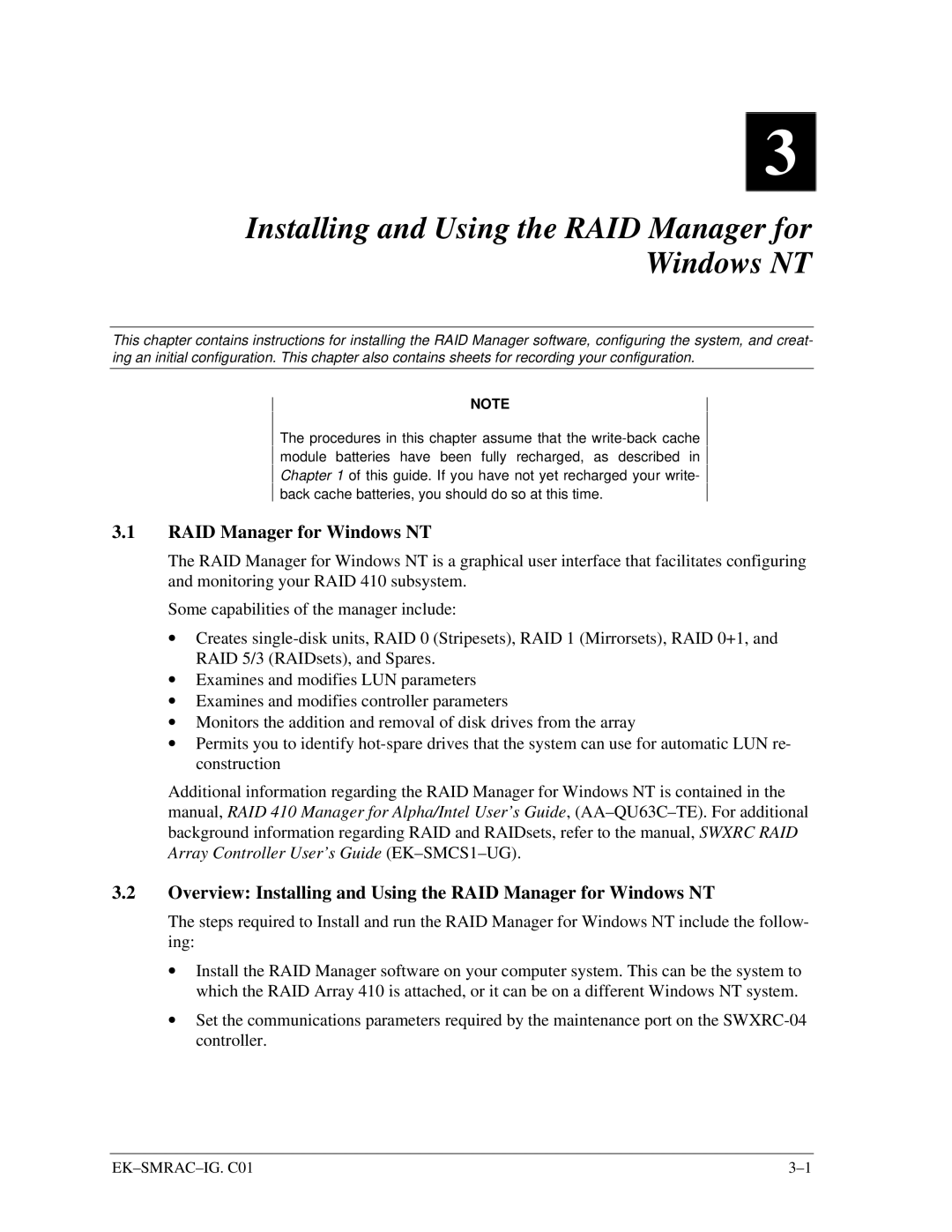
3
Installing and Using the RAID Manager for Windows NT
This chapter contains instructions for installing the RAID Manager software, configuring the system, and creat- ing an initial configuration. This chapter also contains sheets for recording your configuration.
NOTE
The procedures in this chapter assume that the
3.1RAID Manager for Windows NT
The RAID Manager for Windows NT is a graphical user interface that facilitates configuring and monitoring your RAID 410 subsystem.
Some capabilities of the manager include:
∙Creates
∙Examines and modifies LUN parameters
∙Examines and modifies controller parameters
∙Monitors the addition and removal of disk drives from the array
∙Permits you to identify
Additional information regarding the RAID Manager for Windows NT is contained in the manual, RAID 410 Manager for Alpha/Intel User’s Guide ,
3.2Overview: Installing and Using the RAID Manager for Windows NT
The steps required to Install and run the RAID Manager for Windows NT include the follow- ing:
∙Install the RAID Manager software on your computer system. This can be the system to which the RAID Array 410 is attached, or it can be on a different Windows NT system.
∙Set the communications parameters required by the maintenance port on the
|
